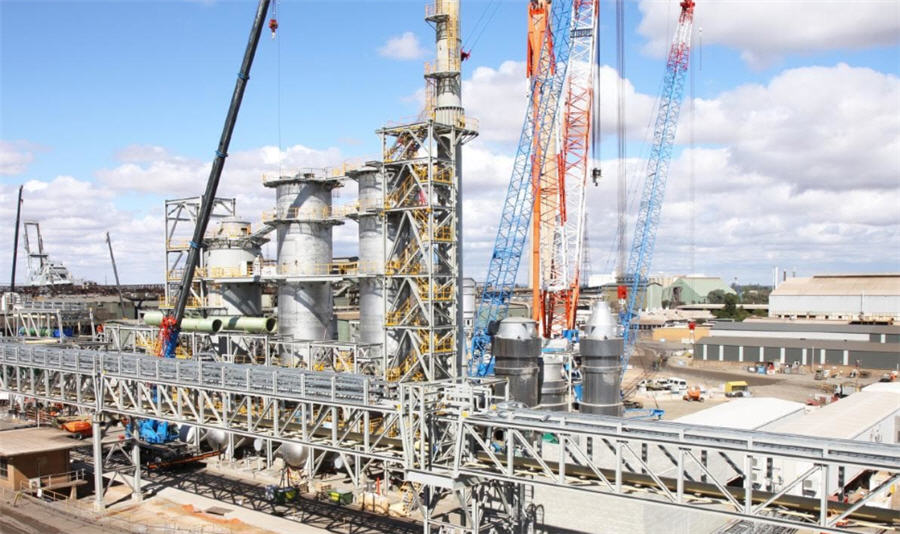
It’s turning out to be a torrid summer for the usually sedate lead market.
The London Metal Exchange (LME) lead market was roiled in early June by news of an unplanned outage at the Port Pirie lead smelter in Australia.
It’s evident that there are serious operational problems at the South Australian plant for it to have two such outages in the space of a couple of months
It’s just been upended again by a second shutdown of the plant, which is operated by Nyrstar, the Belgian company that had to be rescued from potential insolvency by trade house Trafigura.
The second outage has seen LME time-spreads tighten again and the outright three-month price hit a two-week high of $2,101.50 per tonne on Monday.
The market impact has been milder this time around, reflecting a rebuild in LME inventory and accumulating evidence of weakening demand from the all-important automotive sector.
But keep an eye on the relative-value trade with sister metal zinc. It can be a price driver of both markets and the zinc premium is now at its lowest in three years.
The Port Pirie smelter, which last year produced 160,000 tonnes of lead, originally went down on May 28 with the company declaring force majeure on deliveries to customers.
Nyrstar said on July 19 it had commenced the restart of operations and confirmed on July 31 the smelter was fully back up and running. It pegged the hit on production at around 30,000 tonnes.
The company admitted this Monday that the smelter had been shut down again. It didn’t give much detail as to what happened or when it happened.
However, South Australian workplace health and safety body Safework SA said on Aug. 6 it was “investigating a weekend incident at Nyrstar in which molten material and gas escaped from a large furnace.” That implies the latest setback took place within a couple of days of the plant returning to normal operations.
Nyrstar’s assessment is that the furnace will be out of action for “a number of weeks” and that it was looking at reactivating an older furnace to compensate, although this will come with a likely restraint on run-rates due to emission regulations.
The timeline is important to understanding the market reaction, which really kicked in over the course of last week.
The first things to move were the front-month LME time-spreads.
The cash-to-three-months spread <CMPB0-3> was valued at a small contango of $6.50 per tonne at the close of business on Friday, Aug. 2.
By the close of business Thursday, Aug. 11, that spread was valued at a backwardation of $29.50 per tonne. It has since eased again to a current cash premium of $6.00.
Lead demand is looking decidedly shaky due to weakness in the automotive sector
The outright lead price last week spiked from a Monday low of $1,932 to a Friday high of $2,082 with follow-through buying lifting it to yesterday’s two-week high. It has since eased to$2,050 as of Tuesday morning.
The spreads contraction was milder than that generated by the first outage, when the cash-to-three-months period flexed out to a $42.50 backwardation.
There were less short positions this time around. LME broker Marex Spectron assesses speculators were running a marginal net short of 2.5% of open interest ahead of the latest outage news, compared with a mega short of 27% of open interest when the Port Pirie smelter first went down.
Moreover, there has been an influx of metal into the LME warehouse system in the intervening period, dampening some of the speculative heat in the time-spreads.
A cumulative 31,925 tonnes were warranted in three major tranches in the week ending Aug. 2, the bulk of it at the Taiwanese port of Kaohsiung (21,250 tonnes) and at Rotterdam (7,075 tonnes).
Those LME deliveries appeared to bear out expectations that the period of acute physical tightness in the lead market was passing.
The International Lead and Zinc Study Group (ILZSG) has forecast the global market to transition from two consecutive years of supply shortfall to a 71,000-tonne surplus this year.
Moreover, lead demand is looking decidedly shaky due to weakness in the automotive sector.
More than 80% of lead usage comes from batteries and the biggest component are automotive batteries. That includes even new electric vehicles, which have a small lead battery to control operating systems, while lithium-ion batteries are used to actually propel the vehicle.
Global automotive sales are falling just about everywhere but they are sliding particularly hard in China, the world’s largest market, and India, the market with the greatest growth potential.
Lead’s supply-demand dynamics, in other words, are particularly fluid right now, which makes the amount of metal lost at Port Pirie particularly significant.
Another 30,000 tonne hit would have a sizeable bearing on global production outside of China.
Also highly fluid is the ever-popular relative-value trade between lead and its sister metal zinc.
Both metals are following the same fundamental trajectory from acute tightness to supply surplus but they are doing so at different speeds, generating significant volatility in the relative-value trade.
Zinc’s premium over lead dropped to $163 per tonne at one stage Monday, which is the narrowest it has been since 2016.
That’s also down to zinc’s under-performance over the last few weeks but the relative-value trade can easily become a price driver in itself if enough speculative money is committed.
Port Pirie’s woes therefore can have double impact, both in terms of actual market balance and in the trade around that balance relative to zinc.
Keep an eye on the headlines.
It’s evident that there are serious operational problems at the South Australian plant for it to have two such outages in the space of a couple of months.
(By Andy Home; Editing by David Evans)
Comments